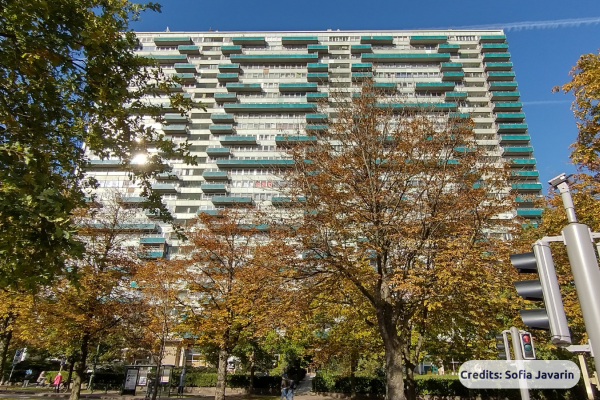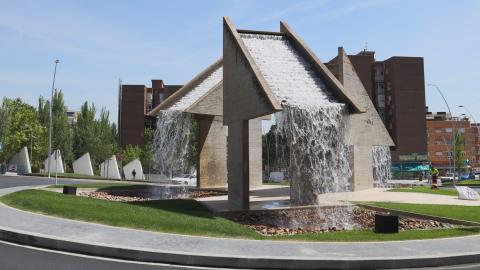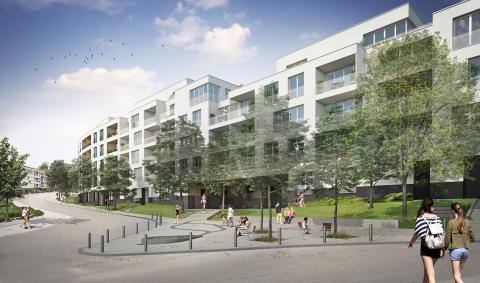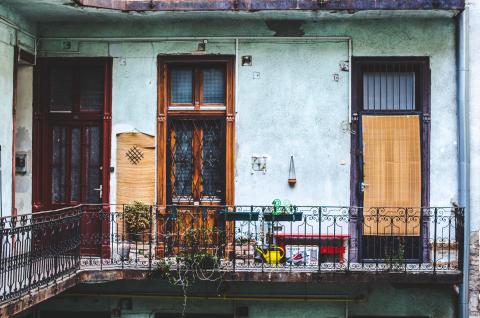
Cities at the heart of Europe’s fight for housing justice
This is the message behind ‘Cities engaging in the right to housing’, a groundbreaking partnership between EUI’s predecessor, Urban Innovative Actions and URBACT. The initiative was launched in 2020 to provide support and inspiration for city administrations implementing rights-based housing politics across the EU. It sparked diverse city exchanges and learning, boosting the European Commission’s work on Housing in cities, and the EU Urban Agenda on Affordable Housing.
Since then, housing challenges have only intensified. As European Commission President Ursula Van der Leyden told the European Parliament in July 2024: “Europe faces a housing crisis, with people of all ages and families of all sizes affected. Prices and rents are soaring. People are struggling to find affordable homes.” Acknowledging the need for urgent action, she appointed a Commission for Energy and Housing.
Housing is fundamental to our health, well-being, and the ability to live safely and with dignity. So, what are urban administrations doing to fight for housing justice?
Cities supporting collaborative housing
By supporting collaborative, non-market-oriented housing, cities can make a real difference. Examples include community-led, participative co-housing, self-builds, cooperatives, Community Land Trusts and ecological housing initiatives.

Fuenlabrada, Spain
Municipality involvement varies enormously across the EU – along with legislation and local competencies. One notable initiative is in Fuenlabrada, Spain, where the SHARE project will launch an intergenerational exchange model. Through this project, elderly residents can offer their city-centre apartments to young people in need of affordable housing. In exchange, they will have the possibility to move into a new collaborative residential building that offers shared spaces and services, helping them to stay independent for longer.

Brussels, Belgium
Many schemes focus on fostering connections and mutual support in a single building or neighbourhood. Take, for example, the intergenerational, feminist, and collaborative housing project, CALICO, co-managed by Brussels housing regional authority and Community Land Trust Brussels. Vulnerable groups such as older women, single mothers, and low-income families live in individual units within a multi-storey building. The model uses an anti-speculative Community Land Trust to ensure long-term affordability.

Budapest, Hungary
In Budapest’s Zugló district, eco-friendly living spaces were co-created in renovated social housing through the E-Co-Housing project – with group mentoring to encourage mutual assistance among diverse households. The municipality aims to appoint a professional to support the community as it develops.
With the right policies, collaborative housing can improves access to adequate, sustainable homes, alongside public social housing schemes, helping put residents’ needs before private profits.
No one left behind
A common thread in these city actions is the commitment to ensure no one is left behind. During Covid pandemic, many public authorities took exceptional measures to protect vulnerable people, including moratoria on rental payments, eviction bans, mortgage payment referrals, temporary accommodation for people experiencing homelessness, or suspending utility disconnections.
Egaleo, Greece
But long-term solutions are needed to tackle housing shortages and build resilient communities. In Egaleo, Western Athens, the EUI’s Rock the Block project engages residents in developing 'Polykatoikies Action Plans' for mixed-use urban blocks. The project promotes energy efficiency and inclusivity while providing a 'Co-living Hub' for community building and a municipal 'Housing Office' that offers free support and advice.

Athens, Greece
Athen’s sustainable approach features housing in an integration programme for refugees, alongside education, employment and community involvement. The project Curing the Limbo connected nearly 300 people with homeowners. Support included advice on leasing procedures, and temporary cash subsidies. As a result, a dynamic solution based on the Social Rental Agency model was proposed in a housing policy framework for the Athens Municipality.

Budapest, Hungary
Cities are also using data innovatively. In Budapest, for example, work on tackling housing exclusion includes transforming unused public buildings into energy-efficient social housing. Their AHA project includes a data-driven early warning system to identify households at risk of rental arrears and energy poverty, effectively linking public utilities, social service providers, and municipalities to support vulnerable people.
Definancialising the housing sector
Underlying this whole issue is the financialisation of housing, when homes are turned into vehicles for global investment. Overvalued housing markets risk pricing residents out of their own homes. The problem worsens as governments sell off public social housing, and land for private development, while also retrenching welfare systems.
In response the ‘Cities engaging in the right to housing’ initiative suggests government take a range of actions to foster housing market definancialisation, including:
- Stop selling publicly owned stocks and land to private developers.
- Re-municipalise, buying back privatised properties for public social housing.
Vienna stands out as an example of a city acting to prevent speculative sales and ensure affordable housing. 62% of its residents live in social or subsidized housing.
“Unlike other large European capitals, such as Berlin, the municipality did not sell its real estate stock in the post-war period,” said Christian Schantl and Susanne Bauer, of the municipal property management company Wiener Wohnen (Le Monde, January 2019).
This enables the city to influence the housing market and set high standards. In 2019, facing pressure from international investors inflating land prices, Vienna introduced regulations limiting investor access to real estate for affordable housing.
Vienna’s Building Law was amended to curtail land speculation. Two-thirds of newly constructed residential units in areas designated for subsidized housing must now be affordable, with rents capped, and units unsellable for 40 years.
City-based housing solutions are as important as ever
“City administrations, in collaboration with various levels of government, play a crucial role in investing and ensuring the availability of affordable, safe, and dignified housing,” says Laura Colini, UIA/URBACT expert in charge of the ‘Cities engaging in the right to housing’ initiative. “Cities are keen to exchange and learn about policies, regulations, projects, and initiatives that tackle current housing challenges and demonstrate the feasibility of realising the right to housing in practice.”
For detailed analysis on the housing situation, you can have a look at the 9th Overview of Housing Exclusion in Europe, recently published. UIA and EUI projects can be a source of inspiration, have a look at the study ‘Cities engaging in the right to housing’, and EUI projects.
